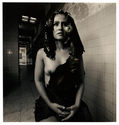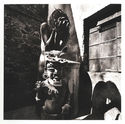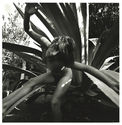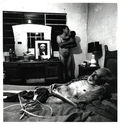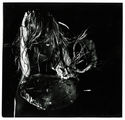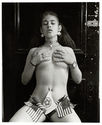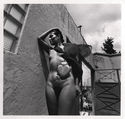
19th, 20th & 21st Century Fine Prints
707-546-7352 · fax 707-546-7924 · web: www.annexgalleries.com · email: artannex@aol.com
Oweena Camille Fogarty Biography
Oweena Camille Fogarty
American / Mexican
1952
Biography
Oweena Camille Fogarty was born in Glendale, California on October 2, 1952. She was trained as a political scientist and interpreter at the Monterey Institute for International Studies in Monterey, California.
While studying on a scholarship in Spain in 1975 she participated as a student in the FOTOCENTRO in Madrid, and came into contact with several important European and Latin American photographers such as Joan Fontcuberta, and Luis Poirot. Upon returning to the United States, she became involved in the West Coast photography movement and received a California Arts Council grant (1976-78) to photograph the United Farm Workers organization led by Caesar Chavez. However, the “decisive moment’ occurred when Don Manuel Alvarez Bravo accepted her as an assistant in 1981 to print a series of platinum prints in his workshop in Mexico. Later that year she became acquainted with photographers from the Consejo de la Fotografia Mexicana such as its founder Pedro Meyer and decided to teach a series of workshops and restore the extraordinary collection of nineteenth century portraits by photographer Romualdo Garcia in the Museo de la Alhondiga de Granaditas in Guanajuato.
After accepting a teaching position in the Universidad Autonoma Metropolitana in Mexico City she began experimental work involving the human body in extreme situations. Enacting a series of performances that reflected an extensive study in anthropology, ethnography, philosophy and the metaphysical processes of live cycles in religious rituals she published the book Recinto Fugaces para Rituales del Tiempo al Viento.
Fogarty earned a doctoral degree in Sciences of the Arts at the Universidad de Oriente in Santiago de Cuba (2002) for her theory of ancestral apparition and it’s “physio-psycho-alchemy,” a physical process that transforms the traditional healer into a “medium” or support system connected to eternal time and sacred geographies capable of opening the axis mundi and facilitating a collective balancing of psycho-social forces which enable the ritual to become an “act of rupture, transformation and liberation.”
Her most recent project, El Batallón de San Patricio, explores the methodological approaches of certain artistic practices in creating alternatives that seek to uncover issues that are beyond the traditional forms of historiography. Today, she coordinates an investigative centre on New Media at the Universidad Autonoma Metropolitana –Intermedia- that explores the cultural and artistic possibilities of the Internet.
Thirty years on, Oweena Fogarty's work over has evolved to include and indeed focus on performace and video art. She participated in the Havana Biennial as an invited artist working on a project with the curator Juan Delgado Calzadillo. She has been an active member of Mexico´s System for National Creators FONCA for the past 15 years.

